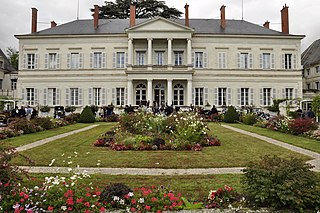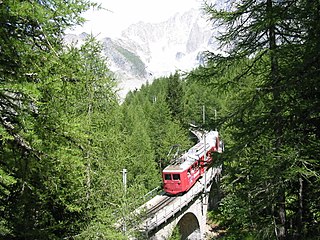
The Montenvers Railway or Chemin de fer du Montenvers is a rack railway line in the Haute-Savoie region of France. The line runs from a connection with the SNCF, in Chamonix, to the Hotel de Montenvers station, at the Mer de Glace, at an altitude of 1,913 m (6,276 ft).

The SNCF Class BB 60030 diesel locomotives were built by FAMH / Jeumont for the Chemin de Fer Paris-Lyon-Méditerranée (PLM) in 1938. They were powered by Sulzer engines, producing 550 bhp, and weighed 68.5 tonnes.
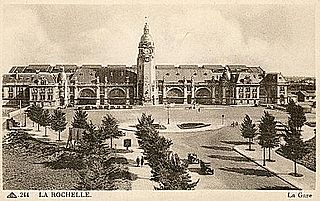
The Chemins de fer de l'État, often referred to in France as the Réseau de l'État, was an early state-owned French railway company.

Établissements Billard was a French railway rolling stock construction company based in Tours. It specialised in light railbuses and metre gauge and narrow gauge rolling stock. The business ceased trading in 1956 and later became Socofer.

Chemins de Fer de la Corse (CFC) is the name of the regional rail network serving the French island of Corsica. It is centred on the town of Ponte-Leccia, from which three main lines radiate to Ajaccio, Bastia, and Calvi. The section following the northwest coastline between L'Île-Rousse and Calvi, known as the Balagne line, gives access to many beaches and is very popular with tourists.
The French word Autorail describes a single powered railcar capable of carrying passengers. While the concept faded for a while, it has been introduced with a new range of vehicles for both standard and metre gauge lines.

SNCF's X 2400 are a class of railcars. The 79 XABDP 2400, unifiés 600 PS (440 kW) were built from 1951 to 1955. They were capable of carrying 12 passengers in 1st class and 56 in 2nd class, they were 27 m long and capable of reaching a top speed of 120 km/h (75 mph). The railcars were often coupled to trailers of coupled to other units.

The Chemin de Fer de la Baie de Somme, is a preserved railway in northern France. The railway is managed by a non-profit organization, which runs from March to December between the towns of the Baie de Somme area: Le Crotoy and Cayeux-sur-Mer via Noyelles-sur-Mer and Saint-Valery-sur-Somme, on metre gauge tracks. The association was founded in 1970 and over the years it has become a major player in tourism development in the Picardy coast and is also responsible for the preservation, safeguarding and enhancement of the fleet full of cars, wagons, steam locomotives and diesel locomotives. The line is one of the closest French heritage lines to the UK, Noyelles is 73 kilometres (45 mi) from Boulogne-sur-Mer and 105 kilometres (65 mi) from Calais. A part of the line has dual gauge track, and although forming part of a group of five lines, at least a part of it has always been open to traffic.
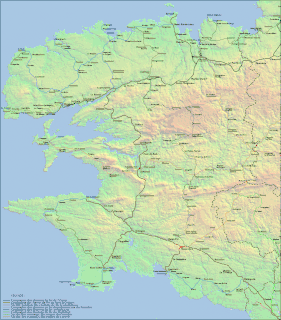
The Chemins de fer départementaux du Finistère (CFDF) was a metre gauge railway system in northwest Brittany, France. It was opened in stages between 1893 and 1907, and closed in 1946. The system had a total extent of 214 kilometres (133 mi).
The Réseau Breton (RB) is a 1,435 mm, standard gauge, and former 1,000 mm, metre gauge, railway in Finistère, France, with a few kilometres of line in Côtes d'Armor, Ille-et-Vilaine and Morbihan. The hub of the system was Carhaix. The metre gauge lines were built with the capacity to be easily converted to standard gauge if necessary.
The Tramway de Pithiviers à Toury (TPT) was a 600 mm narrow gauge railway in the Loiret department of France. The system had a total extent of 80 kilometres (50 mi)

The Musée des tramways à vapeur et des chemins de fer secondaires français is located alongside Valmondois railway station, in the small town of Butry-sur-Oise in the departement of Val-d'Oise, 30 kilometres (19 mi) north of Paris.
The museum houses a collection of railway vehicles from the former French departmental railways, preserved, restored and rebuilt by the members of an association. During the season, short trips can be made on some of the exhibits, along a metre gauge line, one kilometre in length, nicknamed the "Impressionists' railway".
Socofer is the name for the railway construction company that before 1968 was known as Établissements Billard.

The Y 7400 class of small shunters is France's most numerous with 488 locomotives in the production build. The first 120 were built by Decauville, with further batches built by De Dietrich (105) and Moyse (263). They have the 0-4-0 ("B") wheel arrangement, 150 kW diesel engines and mechanical transmission. They can be found all over the French network.

The SNCF locomotives BB 1 to BB 80 were a class of 1500 V DC 4-axle electric locomotives originally built for the Chemin de Fer de Paris à Orléans in the 1920s. The locomotives were originally numbered E.1 to E.80 prior to the Paris and Orleans railway company's incorporation into the Société Nationale des Chemins de fer Français (SNCF) in 1937.
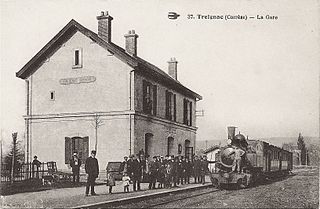
The PO Corrèze (POC) is a former metre-gauge railway in the Corrèze department in central France. The concession was granted to the Chemin de Fer de Paris à Orléans (PO) and constructed by the Société de Construction des Batignolles. Together with the Chemin de Fer du Blanc-Argent and the Blois à Saint Aignan, they formed the metre-gauge network of the PO.

The SNCF BB 1280 class were a class of 600 V DC 4 axle Bo′Bo′ electric locomotives, formerly Compagnie du chemin de fer de Paris à Orléans machines, initially built for an underground section of line connecting the Gare d'Austerlitz to the Quai d'Orsay in inner Paris. The locomotives were converted for 1500 V DC use in the 1930s, and renumbered PO E.281 to E.293. They were absorbed by the SNCF, and operated as shunters until the late 1960s.

The SNCF X 3800 class are diesel railcars with an elevated off-center control cabin. It is often said that they were nicknamed “Picassos” because the off-center cabin was reminiscent of paintings by Pablo Picasso featuring faces where the eyes and nose were completely offset. The nickname may though have come from the number of early paint schemes applied to the class.
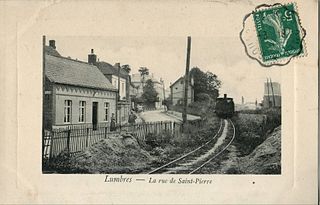
The Chemin de Fer d'Anvin à Calais was a 1,000 mmmetre gauge railway from Calais to Anvin, in the Pas-de-Calais department of France. It opened in 1881 and closed in 1955.




